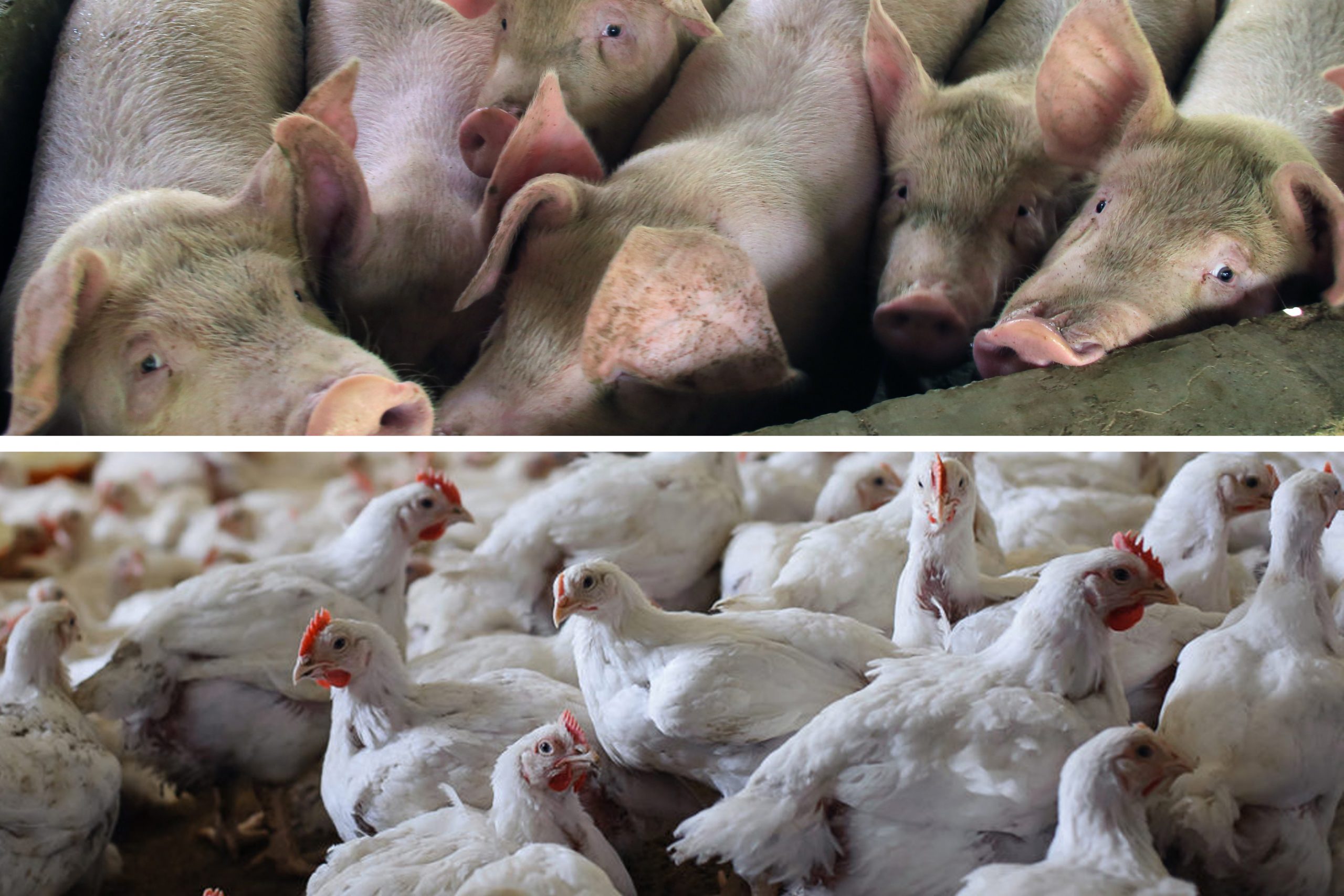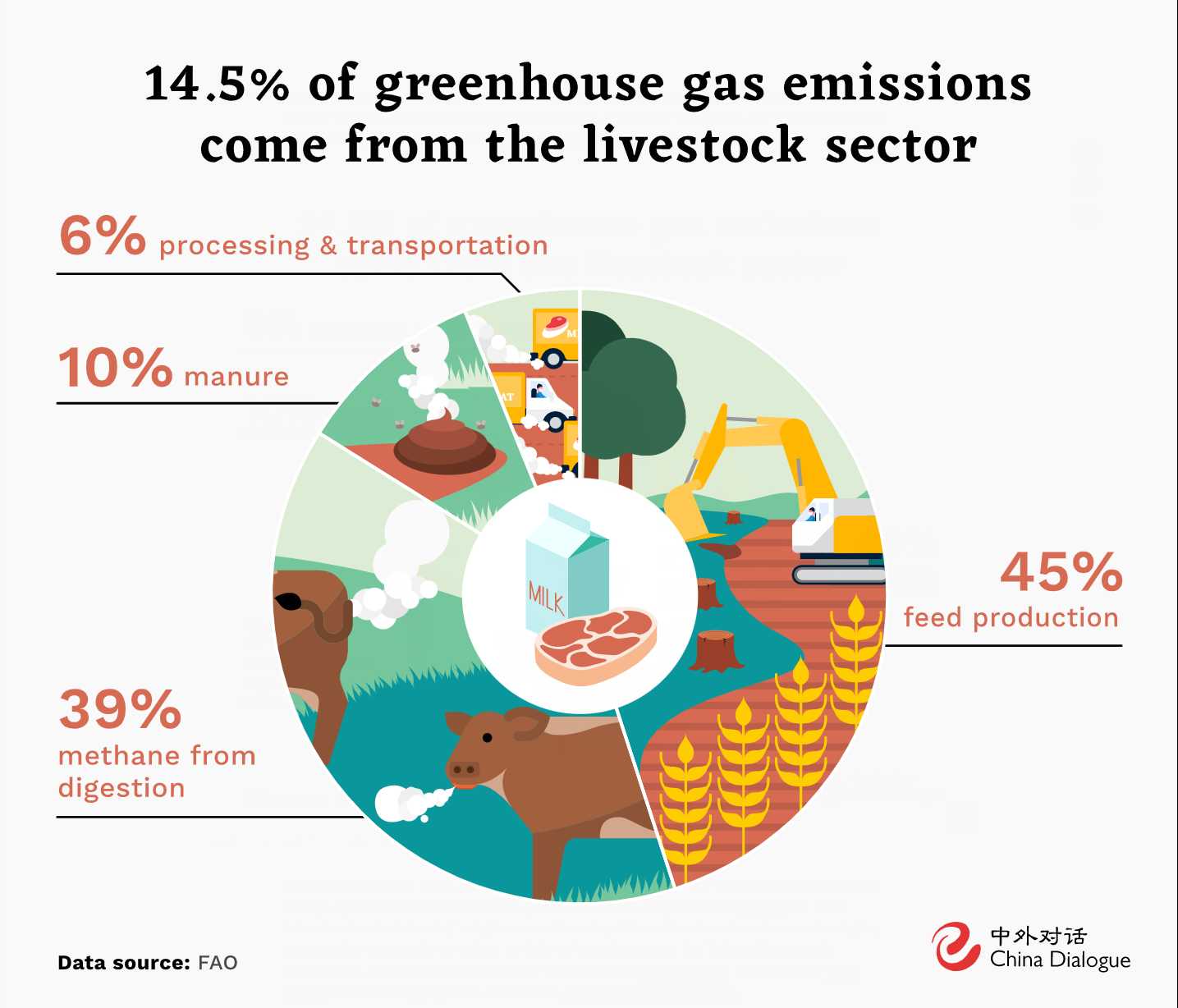Livestock farming is a massive global industry with far-reaching environmental consequences.
Understanding how raising cattle, pigs, chickens, and other animals affects the planet is an important step towards sustainability.
This article explores the multifaceted effects of livestock on climate, land, water, and pollution.
How does livestock affect the environment?

Livestock farming has significant negative environmental impacts, including greenhouse gas emissions, deforestation, water pollution and scarcity, biodiversity declines, and land degradation.
However, techniques like rotational grazing, silvopasture, and reducing meat and dairy consumption can mitigate these effects and enable more sustainable production.
Key Points
- Livestock generates 14.5% of global greenhouse gas emissions, mostly from manure and digestive processes.
- Meat production requires vastly more land and water resources than plant-based foods.
- Overgrazing and pasture expansion for feed production are leading causes of deforestation.
How much greenhouse gas does livestock produce?

Livestock generate approximately 14.5% of global greenhouse gas emissions according to the UN Food and Agriculture Organization.
Cows produce methane, a potent heat-trapping gas, through their digestive processes.
Manure also releases nitrous oxide emissions.
The massive deforestation for cattle grazing and growing feed crops releases stored carbon.
Intensive energy used to raise and process animals adds emissions.
Reducing meat consumption, optimizing feed, and using biogas digesters could significantly lower emissions.
Does meat production increase water scarcity?
The large water needs of livestock contribute to freshwater depletion and scarcity.
Beef has a water footprint of over 15,000 liters per kilogram.
Drinking water for animals alongside water for feed crop irrigation constitutes the majority of use.
Groundwater levels fall rapidly due to overdrawn cattle-related usage, especially in dry regions.
Water pollution from effluent further strains limited supplies.
Strategies like pasture-based rotational grazing, dry lot feeding, and silvopasture integrate trees and reduce livestock water impacts.
How does animal agriculture drive deforestation?
Expanding pasture and cropland for animal feed are primary drivers of deforestation, especially in Latin America.
Up to 80% of deforested land in the Amazon is used for grazing.
Commercial meat production requires vastly more land than plant-based foods.
For reference, producing one pound of beef needs over 15 times the land area of one pound of beans.
Preventing further agricultural expansion into forests through land use planning and policy is critical to curtailing deforestation.
Does livestock shrink biodiversity?
Livestock grazing and feed production substantially reduce biodiversity.
Forests cleared for pasture destroy natural ecosystems, decimating endemic wildlife.
Overgrazing degrades land, allowing invasive species to displace native ones.
Monoculture feed crops like soy eliminate plant diversity.
Pesticide application to maximize yields harms beneficial insects.
The manure from intensive livestock operations pollutes waterways, threatening aquatic life.
Balancing density-dependent grazing, integrating buffer zones, and expanding pasture biodiversity helps mitigate biodiversity declines.
Does a plant-based diet really help the planet?
Shifting towards plant-forward diets with reduced meat consumption mitigates multiple environmental issues.
Replacing beef with beans reduces greenhouse emissions by up to 96%.
Less pasture expansion decreases deforestation.
Crops like hay require a fraction of the water of livestock.
Increased land efficiency enables wild habitat preservation.
However, exclusively grass-fed ruminants can upcycle non-arable land.
Overall, plant-based diets minimize land, water, climate, and pollution impacts.
However sustainable omnivore diets incorporating some meat offer flexibility.
Can livestock ever be sustainable?
Specialized practices like silvopasture, rotational grazing, and integrating buffer zones and biodiversity into pastures can improve sustainability.
Eliminating feedlot confinement in favor of pasturing enhances animal welfare too.
However, vastly reducing meat consumption is still needed to attain sustainability goals.
Some small-scale integrated livestock facilitate soil nutrition cycling if managed adaptively.
While livestock is deeply culturally embedded, returning to levels 30 years ago could enable sustainability if coupled with conscientious production.
Should I stop eating meat to help the planet?
Curtailing meat intake, especially ruminant meats like beef and lamb that have large environmental footprints, offers substantial ecological benefits.
But animal products in moderation can be part of a sustainable diet.
Consider meat a flavoring rather than the centerpiece of meals.
Shifting to chicken and pork over beef reduces impact.
Meatless Mondays limit consumption while still allowing it.
Support pasture-based and organic local ranches.
Being an informed, mindful consumer enables enjoying meat judiciously in ways aligned with ecological values.
Can livestock ever be carbon neutral?
Innovations in livestock management show potential for carbon neutrality.
Confining cows during high-methane-producing digestion and then moving them to pasture nearly eliminates emissions.
Seaweed supplements in feed could reduce enteric fermentation methane by up to 80%.
Compost bedding packs and biodigesters also mitigate emissions.
Rotational grazing sequesters carbon in soils.
While technical mitigation is advancing, the benefits are largely negated by ongoing large-scale emissions.
Reducing the consumption of animal products remains imperative for meaningful climate action.
Should I stop eating dairy too?
Dairy production has ecological impacts from methane emissions, nitrogen-based fertilizers, and resource usage for milk production.
However, small, pasture-based dairy where cows are grass-fed has a lower impact.
Removing dairy, especially from dense nutrition sources like yogurt, eliminates important nutrients.
But minimizing milk and yogurt in favor of plant-based choices can be worthwhile for the planet and health.
Significantly reducing overall animal product intake while choosing sustainable varieties enables modest dairy consumption.
As with meat, being an educated consumer is key.
How does meat production affect land use?
Meat production requires vastly more land than growing plant-based foods.
Up to 80% of agricultural land in the U.S. is used for grazing livestock or growing feed crops.
Producing just one pound of beef requires over 15 times the land area needed for one pound of beans.
Vast forest and grassland areas are converted to pasture and animal feed production, destroying natural ecosystems.
Livestock farming is the primary driver of deforestation, especially in Latin America where forests are cleared for cattle pasture and soy feed crops.
Reducing meat consumption would enable much of this land to regenerate forests and grasslands, supporting biodiversity and carbon sequestration.
Sustainable land management integrating trees, diverse vegetation, and rotational grazing can optimize pastureland.
But ultimately, transitioning towards more plant-based diets reduces pressure on limited land resources.
How much water does it take to produce meat?
Livestock require substantially more water than plant-based foods.
Beef’s water footprint exceeds 15,000 liters per kilogram, with the majority stemming from the irrigation of feed crops.
Chicken requires over 4,000 liters per kilogram. In contrast, fruits and vegetables typically need under 1,000 liters per kilogram.
Drinking water for animals along with water for feed crop irrigation constitutes the vast majority of animal agriculture’s water use.
As freshwater resources dwindle globally, reducing meat consumption is an effective strategy to conserve water.
Improved practices like pasture-based rotational grazing, dry lot feeding, and integration of drought-tolerant plants also help curtail livestock’s water footprint.
What percentage of emissions are from livestock?
Livestock globally account for approximately 14.5 percent of human-induced greenhouse gas emissions according to the UN Food and Agriculture Organization.
Cattle make up the majority, generating 65% of the livestock sector’s emissions.
Cows produce significant amounts of methane from enteric fermentation in their digestive processes.
Manure also emits nitrous oxide.
Additionally, immense deforestation for pasture and feed crops releases substantial carbon stored in vegetation.
Livestock production’s energy consumption and transportation impacts add emissions too.
Reducing ruminant meat consumption, improving pasture conditions, and applying biogas capture systems could cut emissions by up to 30%.
But ultimately, transitioning towards more plant-based diets remains essential to limit climate change.
Key Takeaway:
- Livestock farming affects climate, land, water, pollution, and biodiversity.
- Shifting towards plant-forward diets and sustainably produced animal products in moderation can help mitigate the ecological impacts of our food choices.
- Small changes make a meaningful difference.
FAQ
Is grass-fed beef more sustainable?
Grass-fed beef has a slightly lower environmental impact than feedlot beef. However, pastured cattle still produce substantial methane emissions and require large land areas. Eating less beef overall remains imperative.
Should I stop drinking milk for the environment?
It’s reasonable to reduce milk intake, but sustainable small-scale dairy farming has a relatively low impact. Opting for plant-based milk alternatives sometimes supports monoculture agriculture.
Do chickens have less environmental impact than beef?
Yes, chickens require far less feed, water, and land compared to cattle. Chicken generates about 1/8 the emissions of beef per pound. Transitioning to chicken or plant-based protein reduces impact.
The writers at GreenChiCafe are passionate about the environment and our natural world.
Please check out our website for more great content on living sustainably.
